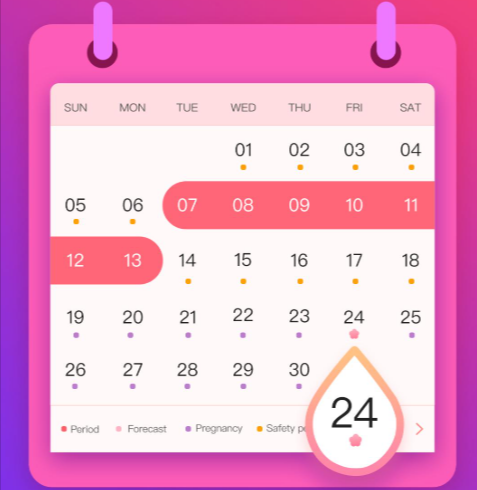Dengue
Overview
Dengue (break-bone fever) is a viral infection that spreads from mosquitoes to people. It is more common in tropical and subtropical climates.
Most people who get dengue will not have symptoms. But for those who do, the most common symptoms are high fever, headache, body aches, nausea, and rash. Most will get better in 1–2 weeks. Some people develop severe dengue and need care in a hospital.
In severe cases, dengue can be fatal.
You can lower your risk of dengue by avoiding mosquito bites especially during the day.
Dengue is treated with pain medicine as there is no specific treatment currently.

Key facts
- Dengue is a viral infection transmitted to humans through the bite of infected mosquitoes.
- About half of the world’s population is now at risk of dengue with an estimated 100–400 million infections occurring each year.
- Dengue is found in tropical and sub-tropical climates worldwide, mostly in urban and semi-urban areas.
- While many dengue infections are asymptomatic or produce only mild illness, the virus can occasionally cause more severe cases, and even death.
- Prevention and control of dengue depend on vector control. There is no specific treatment for dengue/severe dengue, and early detection and access to proper medical care greatly lower fatality rates of severe dengue.
Cause of Dengue
Dengue fever is a viral illness transmitted to humans through the bite of infected mosquitoes, primarily the Aedes aegypti species. These mosquitoes become infected when they feed on the blood of a person already infected with the dengue virus. The virus is not transmitted directly from person to person.
The World Health Organization (WHO) reports that approximately half of the world’s population is at risk of dengue, with an estimated 100–400 million infections occurring each year. Dengue is found in tropical and subtropical climates worldwide, mostly in urban and semi-urban areas.
The primary vector, Aedes aegypti, is a day-biting mosquito that thrives in urban environments, breeding in containers with stagnant water. Effective control measures focus on eliminating mosquito breeding sites and using personal protective measures to prevent bites.
For comprehensive information on dengue, including prevention and control strategies, refer to the WHO’s official fact sheet on dengue and severe dengue.
Diagnosis of Dengue
Dengue fever is a viral illness transmitted by Aedes mosquitoes, prevalent in tropical and subtropical regions. Accurate diagnosis is essential for effective management and to distinguish it from other febrile illnesses.
Clinical Diagnosis:
A provisional diagnosis of dengue is based on the following clinical manifestations:
Fever: Sudden onset of high fever.
Headache: Severe headache, often retro-orbital.
Muscle and Joint Pain: Myalgia and arthralgia.
Rash: Maculopapular rash.
Other Symptoms: Nausea, vomiting, and retro-orbital pain.
These symptoms typically appear 4-10 days after mosquito exposure.
Laboratory Diagnosis:
Laboratory tests can confirm dengue infection and are categorized based on the timing of the illness:
Early Phase (First 5 days of illness):
NS1 Antigen Detection: The non-structural protein 1 (NS1) antigen is detectable in the early phase and can be identified using enzyme-linked immunosorbent assay (ELISA) or rapid diagnostic tests.
Viral RNA Detection: Polymerase chain reaction (PCR) tests can detect viral RNA, confirming the presence of the virus.
Later Phase (After 5 days of illness):
IgM Antibody Detection: IgM antibodies appear around 5 days after symptom onset and can be detected using ELISA.
IgG Antibody Detection: IgG antibodies develop later and indicate past infection. However, IgG testing is not recommended for acute diagnosis.
WHO Recommendations:
The World Health Organization (WHO) recommends a combination of clinical evaluation and laboratory tests for accurate diagnosis:
Clinical Evaluation: Assess symptoms, travel history, and potential exposure to Aedes mosquitoes.
Laboratory Testing: Utilize NS1 antigen detection, PCR, and antibody tests as appropriate, considering the timing of illness.
Early diagnosis is crucial for effective management and to prevent complications. Healthcare providers should be aware of the local epidemiology of dengue and the availability of diagnostic tests.
Symptoms of Dengue
Most people with dengue have mild or no symptoms and will get better in 1–2 weeks. Rarely, dengue can be severe and lead to death.
If symptoms occur, they usually begin 4–10 days after infection and last for 2–7 days. Symptoms may include:
- high fever (40°C/104°F)
- severe headache
- pain behind the eyes
- muscle and joint pains
- nausea
- vomiting
- swollen glands
- rash.
Individuals who are infected for the second time are at greater risk of severe dengue.
Severe dengue symptoms often come after the fever has gone away:
- severe abdominal pain
- persistent vomiting
- rapid breathing
- bleeding gums or nose
- fatigue
- restlessness
- blood in vomit or stool
- being very thirsty
- pale and cold skin
- feeling weak.
People with these severe symptoms should get care right away.
After recovery, people who have had dengue may feel tired for several weeks.
Treatment of Dengue
Dengue fever is a viral illness transmitted by Aedes mosquitoes, prevalent in tropical and subtropical regions. While there is no specific antiviral treatment for dengue, the World Health Organization (WHO) provides comprehensive guidelines for its management, focusing on supportive care and symptom relief.
General Management:
Supportive Care: Most cases of dengue are self-limiting and can be managed at home with supportive care, including rest and hydration.
Hydration: Maintaining adequate fluid intake is crucial to prevent dehydration. Oral rehydration solutions are recommended for mild cases, while intravenous fluids may be necessary for moderate to severe cases.
Symptom Management:
- Fever and Pain Relief: Acetaminophen (paracetamol) is recommended for controlling fever and alleviating pain. The use of non-steroidal anti-inflammatory drugs (NSAIDs) like ibuprofen and aspirin is discouraged due to the risk of bleeding complications.
Monitoring and Hospitalization:
Warning Signs: Patients should be monitored for warning signs such as severe abdominal pain, persistent vomiting, rapid breathing, fatigue, and bleeding. The presence of these signs necessitates immediate medical attention.
Hospitalization: Severe cases of dengue may require hospitalization for close monitoring and supportive care, including intravenous fluid therapy and blood transfusions if necessary.
Prevention and control
The mosquitoes that spread dengue are active during the day.
Lower the risk of getting dengue by protecting yourself from mosquito bites by using:
- clothes that cover as much of your body as possible;
- mosquito nets if sleeping during the day, ideally nets sprayed with insect repellent;
- window screens;
- mosquito repellents (containing DEET, Picaridin or IR3535); and
- coils and vaporizers.
Mosquito breeding can be prevented by:
- preventing mosquitoes from accessing egg-laying habitats by environmental management and modification;
- disposing of solid waste properly and removing artificial man-made habitats that can hold water;
- covering, emptying and cleaning domestic water storage containers on a weekly basis;
- applying appropriate insecticides to outdoor water storage containers.
If you get dengue, it’s important to:
- rest;
- drink plenty of liquids;
- use acetaminophen (paracetamol) for pain;
- avoid non-steroidal anti-inflammatory drugs, like ibuprofen and aspirin; and
- watch for severe symptoms and contact your doctor as soon as possible if you notice any.
So far one vaccine (QDenga) has been approved and licensed in some countries. However, it is recommended only for the age group of 6 to 16 years in high transmission settings. Several additional vaccines are under evaluation.
WHO’s Stance on Dengue
WHO responds to dengue in the following ways:
- supports countries in the confirmation of outbreaks through its collaborating network of laboratories;
- provides technical support and guidance to countries for the effective management of dengue outbreaks;
- supports countries in improving their reporting systems and capture the true burden of the disease;
- provides training on clinical management, diagnosis and vector control at the country and regional level with some of its collaborating centres;
- formulates evidence-based strategies and policies;
- support countries in the development of dengue prevention and control strategies and adopting the Global Vector Control Response (2017–2030) and the Global Arbovirus Initiative (2022–2025).
- reviews and recommends the development of new tools, including insecticide products and application technologies;
- gathers official records of dengue and severe dengue from over 100 Member States; and
- publishes guidelines and handbooks for surveillance, case management, diagnosis, dengue prevention and control for Member States




